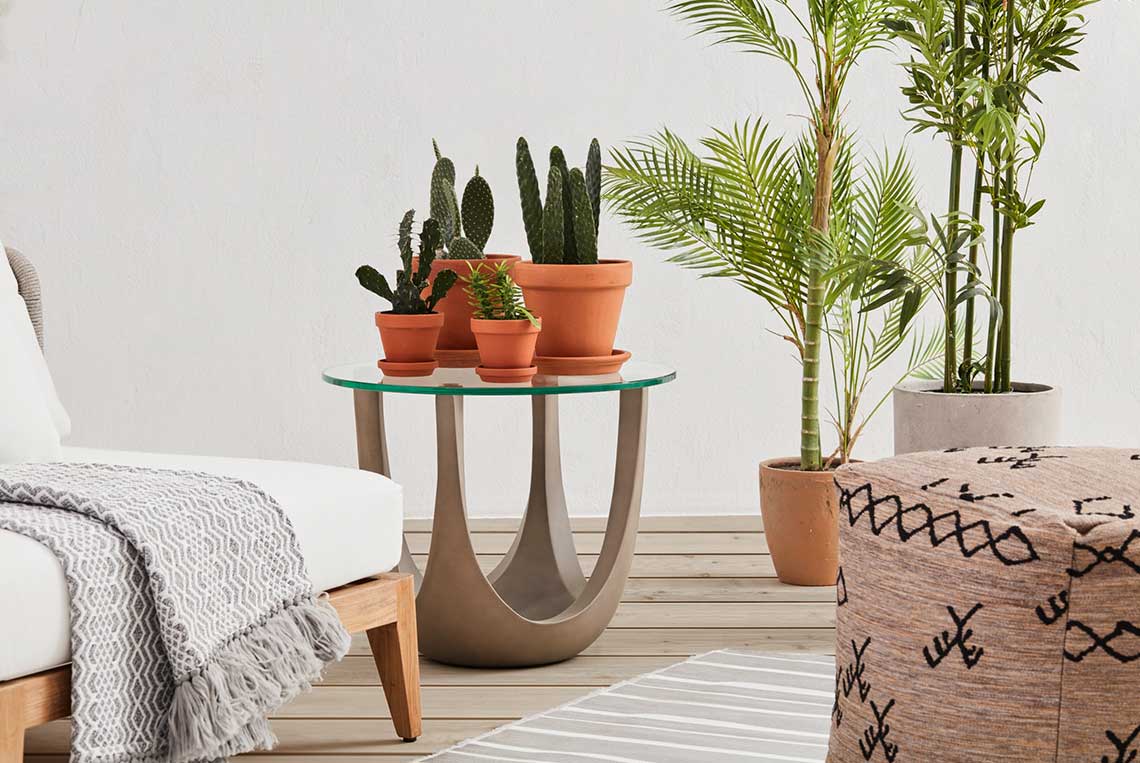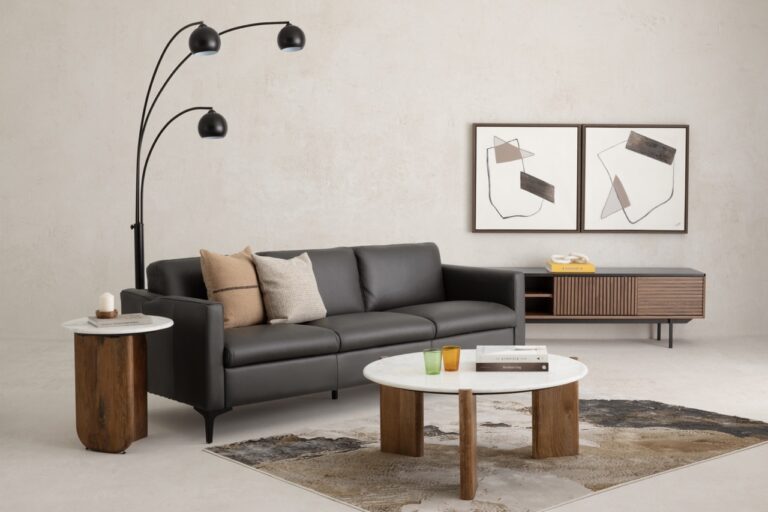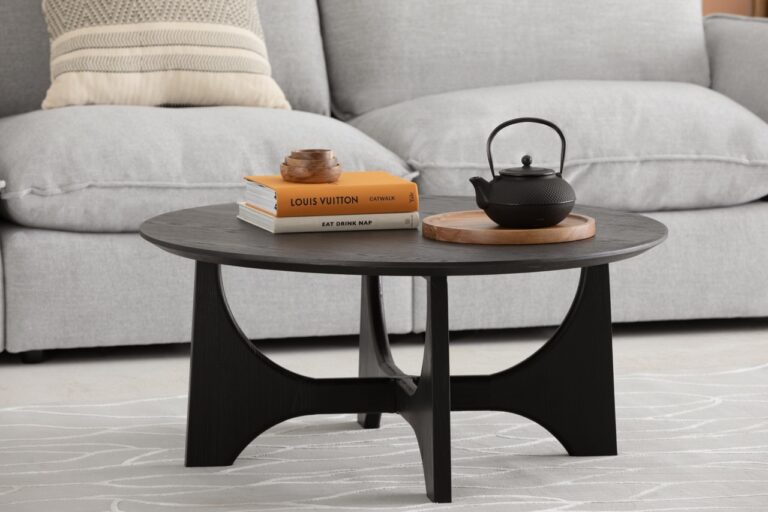Here is how you can make use of furniture and decoration to ease the transition from one environment to another, at your – and the weather’s – whim.
How can you create an exterior layout while taking inspiration from your interior?
Plan your outdoor spaces in the same way you would for an interior room: choose furniture that meets your needs, and add accessories and decorative elements that fit your style, then arrange the colors and textures until you obtain the desired atmosphere.
Plan spaces for leisure and relaxation
Through the use of vegetation, low walls, flowerbeds and other vertical elements, divide the exterior space into various zones dedicated to specific uses. For example:
- Plan for a dining table and chairs, with an overhanging central light fixture, for outdoor dinners. If your patio or balcony get very hot under the sun, add a casual exterior rug , to be able to comfortably go barefoot.
- Lay out a reading corner with a cozy exterior accent chair and a shelving unit filled with decorative objects that can withstand the elements, which evokes a bookcase without books.
- Transform your BBQ corner into a complete exterior kitchen, with counters for food preparation, an exterior fridge, a sink, and some waterproof storage.
- Surround a rustic fireplace with Scandinavian-style exterior accent chairs to gather around the fire with your friends. Add one or two side tables to put down beverages.
Take advantage of lighting
Stretch the fun well into the evening thanks to a well thought-out lighting system. Just like indoors, picture a layered lighting system, which meets multiple different needs:
- Install functional lighting to make stairs, trails, and the edges of raised platforms, more visible and safer to navigate.
- Use projectors to highlight certain anchor elements in your decor, like a pond or a tree, and to create interesting plays on shadow.
- Add mood lighting, by suspending strips of lights up high or in a tree, and by lighting certain surfaces like walls or fences.

How can you tie the exterior and interior spaces together?
Tying the interior and exterior spaces together – even if it’s only a balcony or a gardening corner – can make the room feel larger.
Favour natural materials
Choose flooring, furniture, and decorative elements, made of materials like wood and stone, so that your decor can seamlessly integrate with nature. For example, a dining room furnished with an Acacia wood table is a nod to wooden outdoor elements. In the entrance, a porcelain plate makes for a convenient place to empty one’s pockets, while reminiscent of the pale stone coverings and pavings that are found outdoors.
Don’t forget the windows
Take advantage of your existing windows to create frames for interesting vistas and to allow natural light in. If you have a glass door leading to the balcony, make it look more inviting and appealing with suspended planters and well-chosen exterior furnishings. If the area is being newly constructed (or in case of major renovations), consider the installation of a light well, glass folding doors, or oversized windows that stretch from the floor to the ceiling, in the manner of a curtain wall
Add some greenery to it
Flowers and artificial plants offer an excellent way to invite nature into your home. Place these near windows and exits to give the impression that you are outdoors before you even set foot outside. Favour larger species (without completely blocking your field of view), and with colors that are similar to those found in your backyard. Choose pots and planters made from materials that are similar to those found in your exterior space, such as stone or braided wicker.
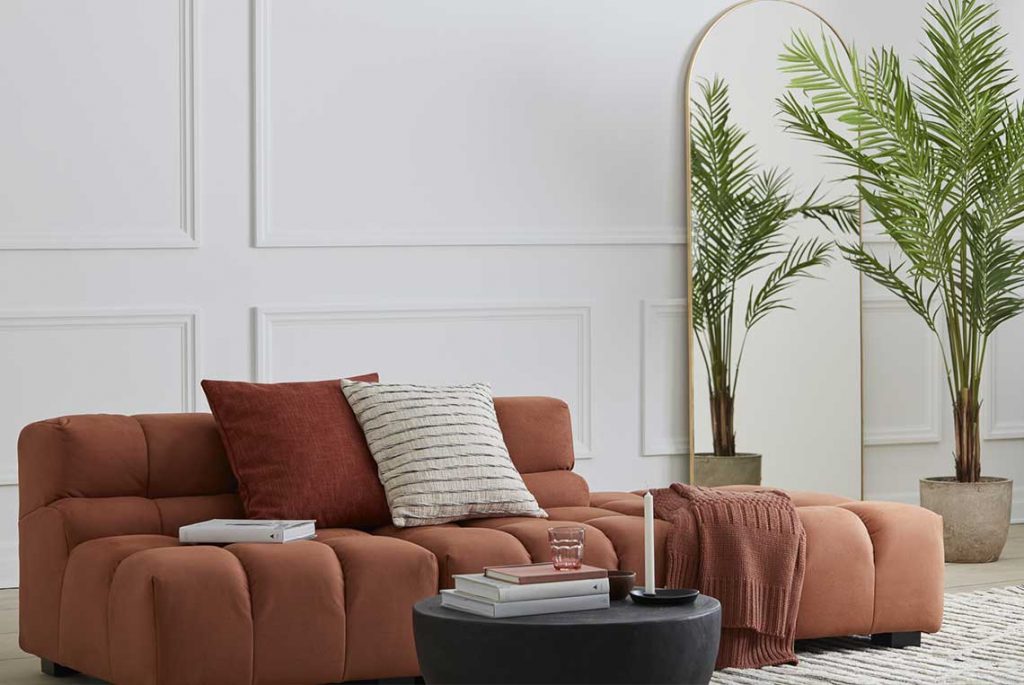
How can you ease the interior-exterior transition?
Some simple design choices can help to blur the border between interior and exterior spaces. Look for continuity, similar visual cues, and ways to extend one environment into another.
Use the same floor covering
A continuous and identical floor creates the illusion of a larger room. Choose an outdoor ceramic finish – both indoors and outdoors – and the same color of mortar cement. Opt for a non-slip surface, which is safer when the ground is covered by rain or dew. For a transition without a threshold, highlight the frames on openings.
Integrate colour and material call-backs
Beautifying an interior space with the kind of finish traditionally reserved for an exterior space – or vice versa – helps to combine the two environments. For example, you could a stone or brick wall in the kitchen which resembles the home’s siding. You could also tint certain outdoor wooden surfaces, like a patio or a fence, by choosing a tint or a paint that’s similar to your interior aesthetic.
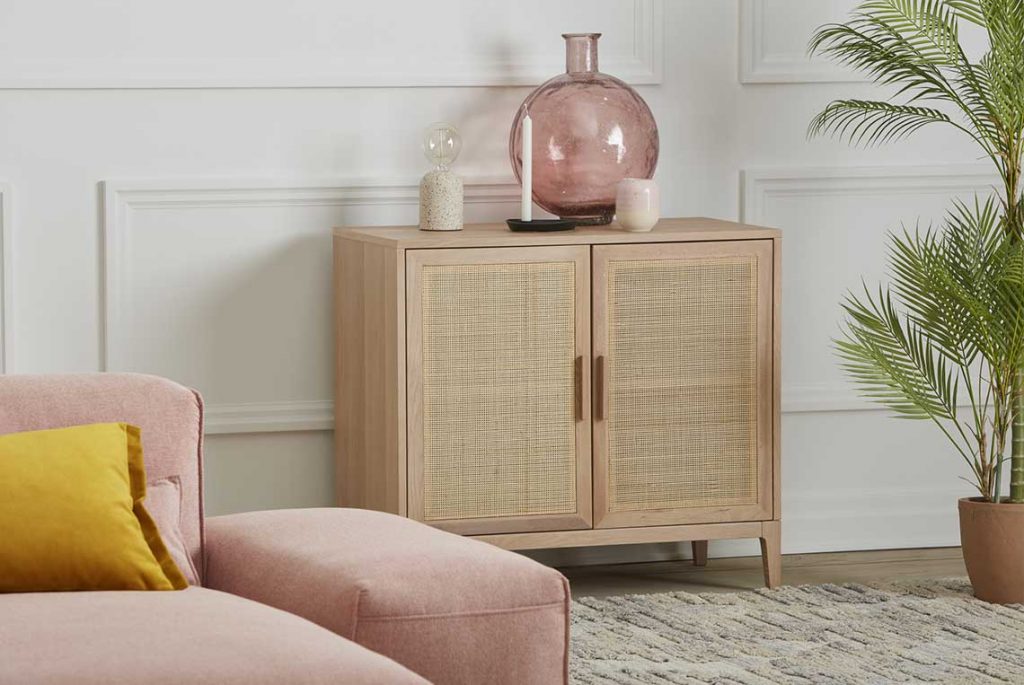
Add a pergola or an awning
A pergola or a gallery acts as a way to extend your home, and creates an outdoor room. The vertical support structure and roof defines the space better than a simple patio, and it provides shade on hot days. Consider installing a covered pergola or an awning, which would allow you to open some doors and windows even when it’s raining, without risk of water getting indoors.
There are many ways to promote harmony between your home’s interior and exterior spaces. Lay out your backyard as an extension of your home. Take inspiration from the great outdoors to decorate your rooms, and let the sunlight in. And, most of all, choose furniture and accessories which help ease the transition from one environment to another.

